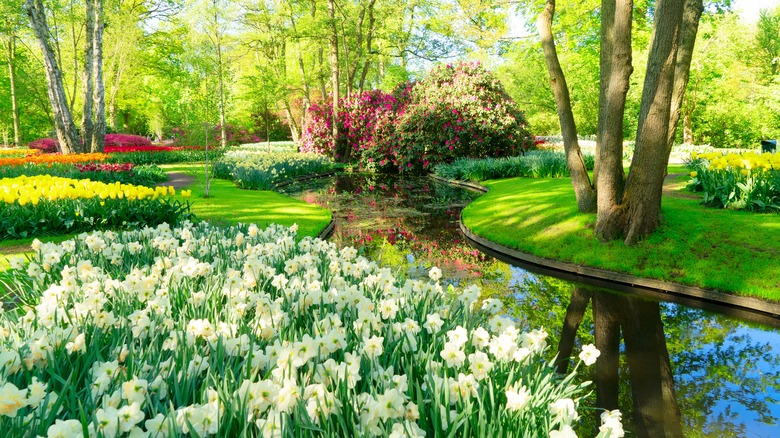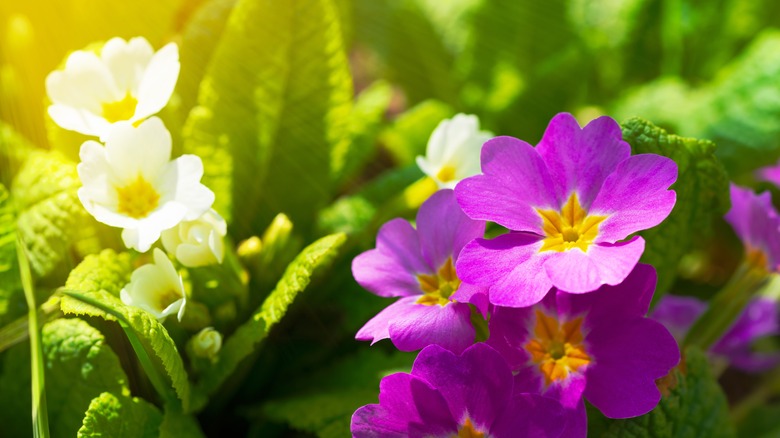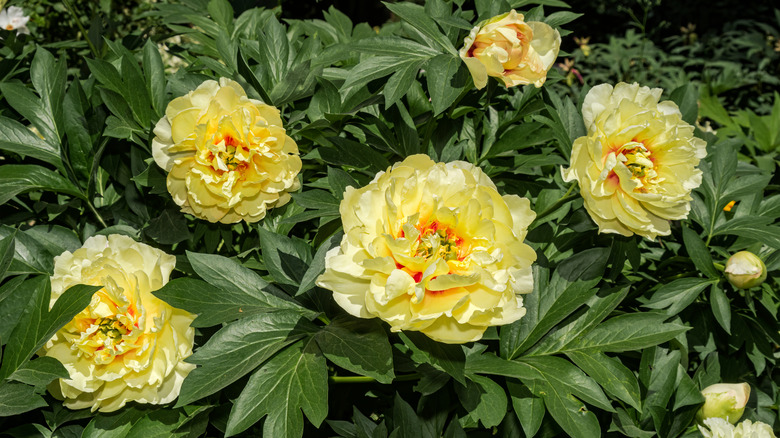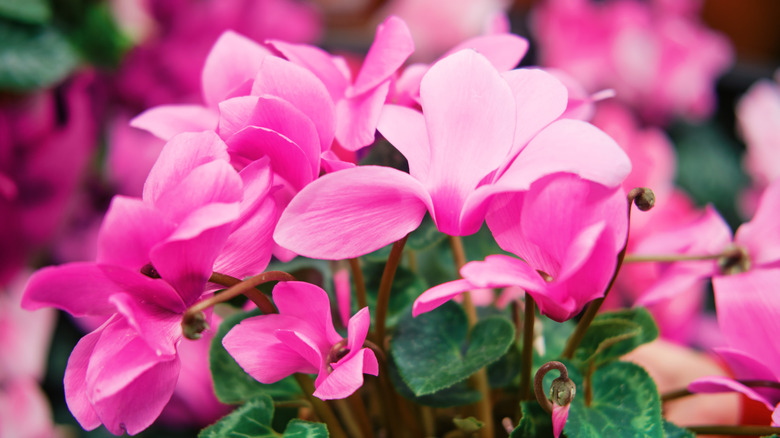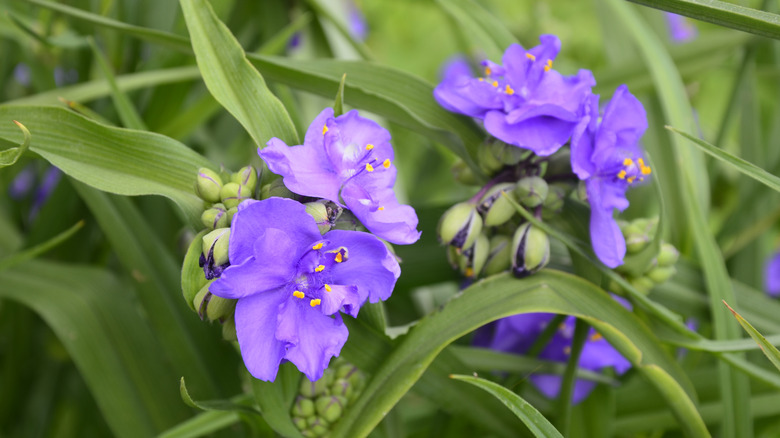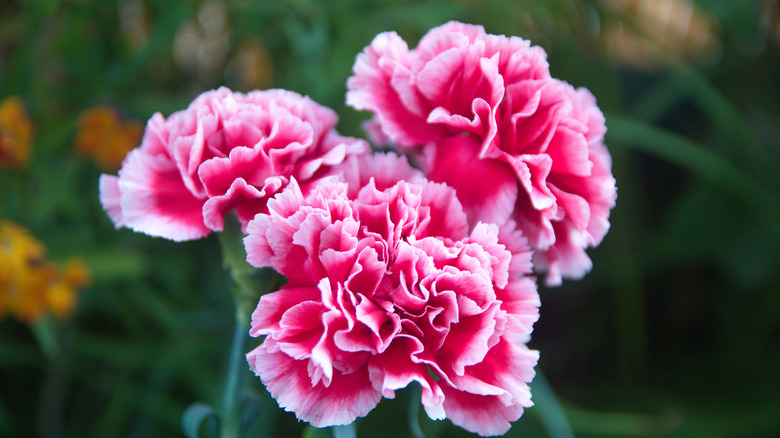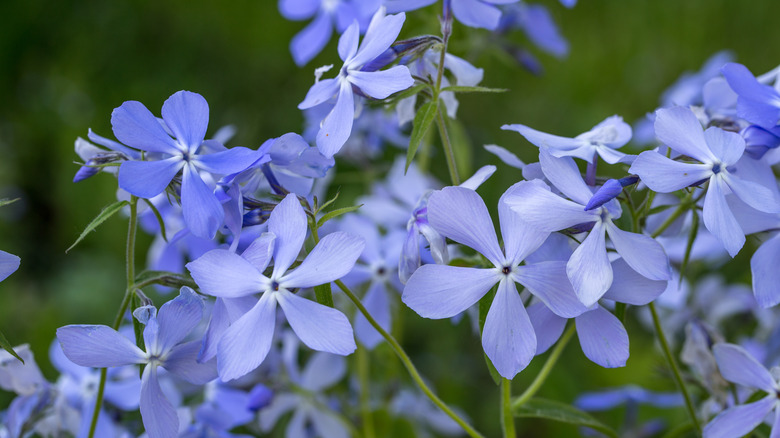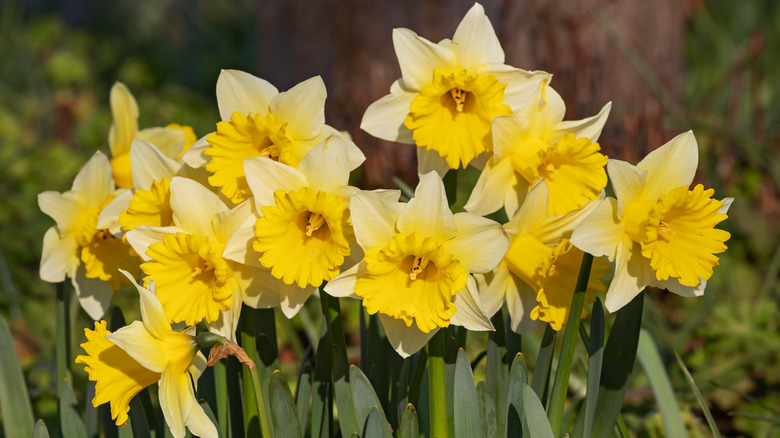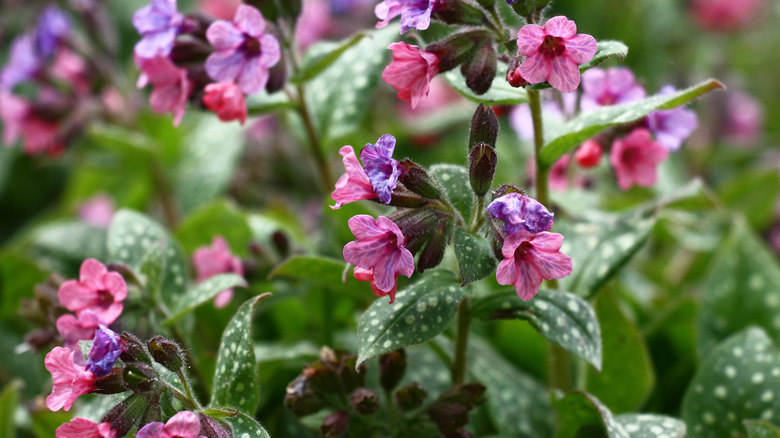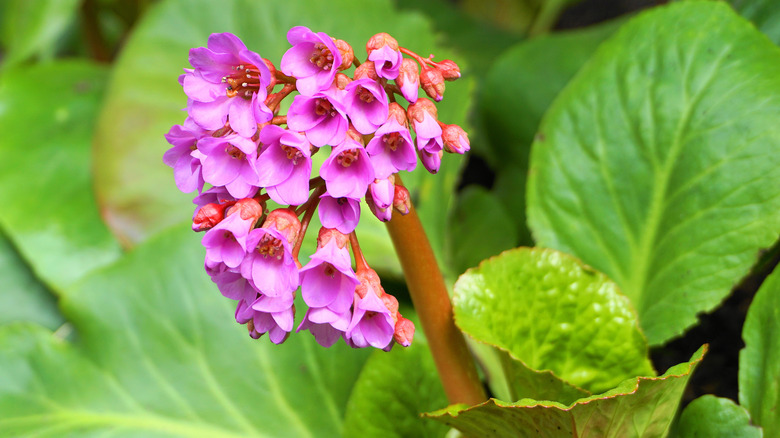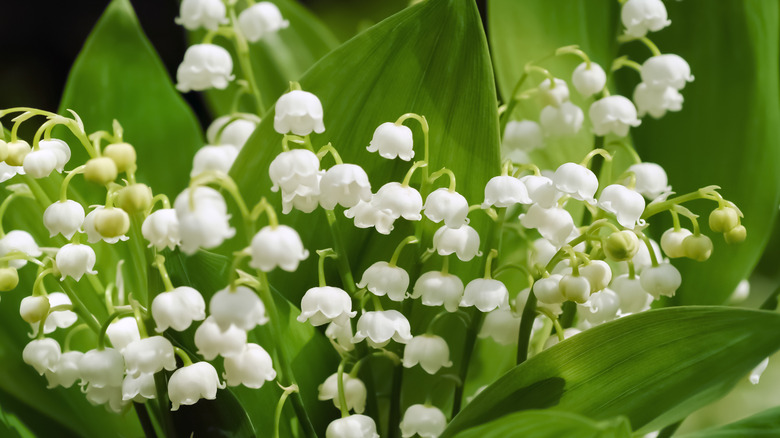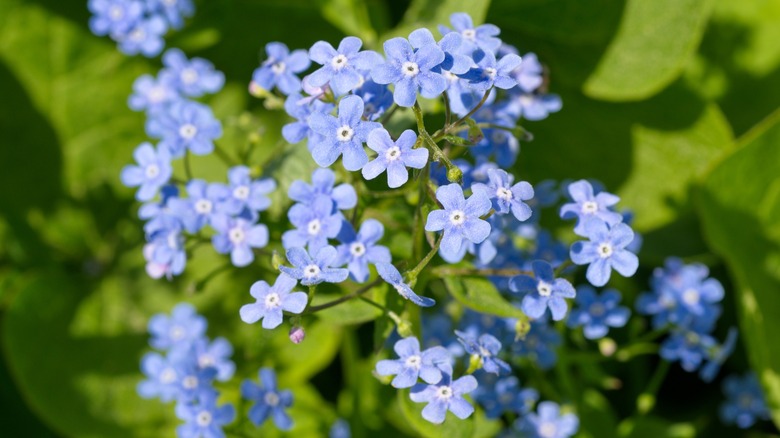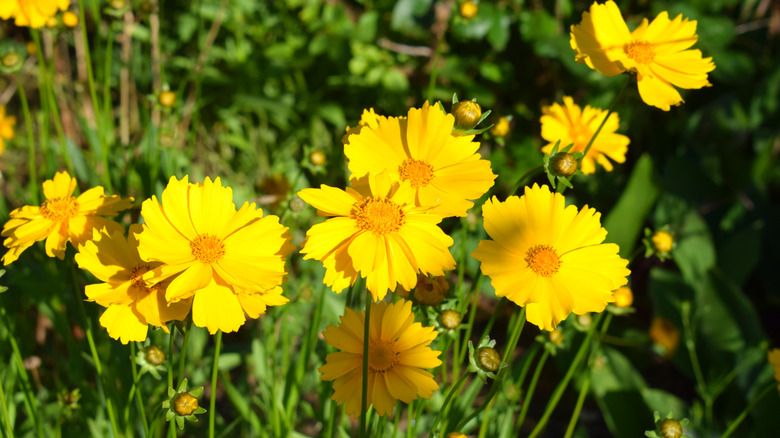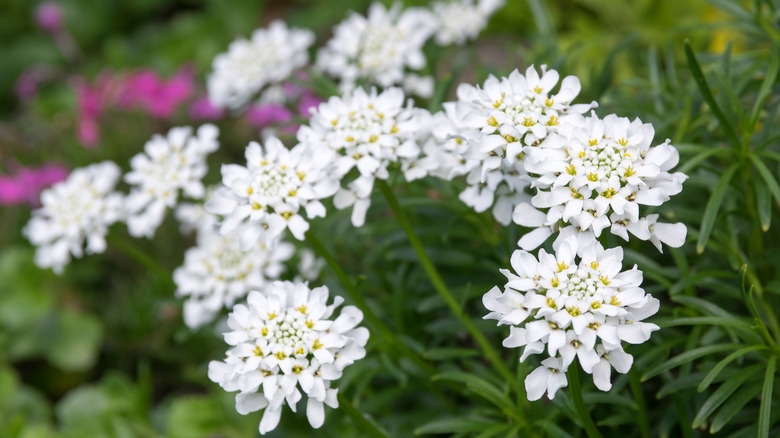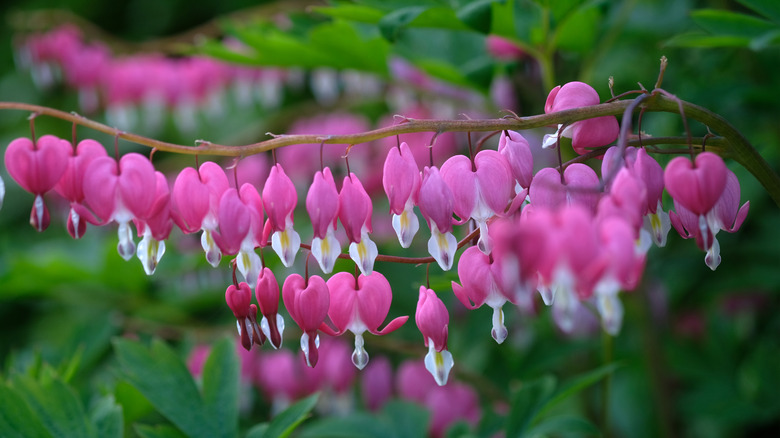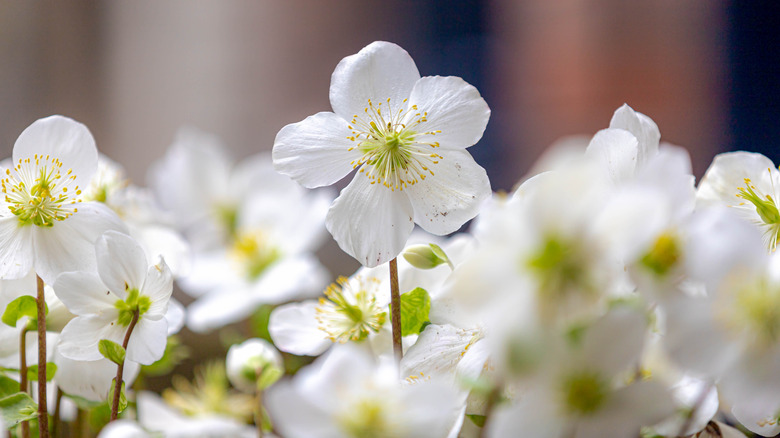15 Flowering Perennials To Plant For A Stunning Spring
Whether you are a seasoned or beginner gardener, choosing which flowers to plant in your garden can be a tricky decision. With thousands of flowering plants to mull over, creating the perfect garden design can take a lot of time and consideration. Of course, you can find your favorites by factoring in your climate, your favorite color, or the soil in your garden, but there is another aspect to think about: choosing between perennial versus annual flowers.
Perennial flowers are the type of plants that will come back and bloom with almost no help. Sometimes they will appear to die all the way down until they grow back in the spring. Other times, they will simply lose their leaves and flowers during the winter, similar to trees, as described by Avas Flowers. Annual flowers have a much shorter life span. Typically, you plant these in the spring, and they will live until the first frost. If you prefer growing a flower garden that will stay more or less the same for at least three years, here are 15 flowering perennials that will make for an attractive garden with little effort.
1. Primrose
Primrose (Primula vulgaris) is known for its sweet but tangy fragrance and its showy flowers. North Carolina State Extension explains that this herbaceous perennial prefers temperatures on the cooler side, even in the summer. They are perfect for use around ponds or streams, or you can simply keep them near your home in a container.
Bloom Season: Early spring
USDA Growing Zone: 4 to 8
Growing Conditions: Partial shade
Soil Type: Well-draining, moist, and humus-based
Size: 3 inches to 6 feet tall depending on the variety
2. Itoh peonies
Itoh peonies (Paeonia Itoh), also called 'First Arrival' Itoh peonies, are early bloomers with dark green foliage that produce large, scented blossoms normally in pink or purple. These peonies are deer and rabbit resistant. Because of this and some other factors, they are ideal for growing in the Pacific Northwest, Northeast, West, and Midwest, according to American Meadows.
Bloom Season: Early spring
USDA Growing Zone: 5 to 7
Growing Conditions: Full sun
Soil Type: Moist and loamy
Size: Up to 3 feet in height and width
3. Florist's cyclamen
Florist's cyclamen (Cyclamen persicum) bloom in white, pink, or red depending on the variety, as per Clemson Cooperative Extension. These small plants are native to the Mediterranean region and prefer warmer climates. Because of their mounding growth habit, this flower makes a great container plant to keep outside in the early spring.
Bloom Season: Winter and spring
USDA Growing Zone: 9 to 11
Growing Conditions: Shade to part shade
Soil Type: Loamy and well-draining
Size: 6 to 16 inches tall
4. Blue Jackets
Blue Jackets (Tradescantia ohiensis) may also be called 'Smooth spiderwort' or 'Ohio spiderwort'. They are native to eastern and central North America and each of the blue or purple flowers will only bloom for one day, as explained by North Carolina State Extension. Growing as perennials in many regions, Blue Jackets can become weedy as they thrive and spread with offshoots.
Bloom Season: Spring and summer
USDA Growing Zone: 4 to 9
Growing Conditions: Full sun
Soil Type: Moist and sandy
Size: Grows up to 3 feet high and 2 feet wide
5. Carnations
Carnations (Dianthus caryophyllus) are just one species within the Dianthus genus, which is full of spring-blooming perennials. Other great Dianthus flowers include Sweet William, Chinese pinks, and garden pinks, as explained by Monrovia. Plants in this genus typically boast a spicy clove scent. They also attract butterflies, hummingbirds, and bees to your garden.
Bloom Season: Spring and summer
USDA Growing Zone: 3 to 9
Growing Conditions: Full sun
Soil Type: Rich and well-draining
Size: 4 inches to 4 feet tall
6. Woodland phlox
Woodland phlox (Phlox divaricata) is native to the eastern part of the United States. Because of this, it thrives in woodland conditions, according to the University of Wisconsin-Madison. The flowers are sweet-smelling and often blue or lavender in color. They are best planted in containers, along a path, or even as sparse ground cover.
Bloom Season: Spring and summer
USDA Growing Zone: 3 to 8
Growing Conditions: Partial shade
Soil Type: Rich and well-draining
Size: Grows up to 15 inches tall
7. Daffodils
Daffodils (Narcissus pseudonarcissus) are low-maintenance flowers that will appear year after year when you plant daffodil bulbs. Typically, they bloom white, yellow, orange, or pink in the spring and they last for up to 6 weeks, as per Longfield Gardens. Traditionally, they are planted on front lawns and small floral garden plots, but you shouldn't be afraid to experiment with containers and window baskets.
Bloom Season: Early to late spring
USDA Growing Zone: 3 to 8
Growing Conditions: Partial shade or full sun
Soil Type: Well-draining
Size: 6 to 16 inches tall
8. Lungwort
Lungwort (Pulmonaria saccharata) is a herbaceous perennial that produces white, purple, and red funnel-shaped flowers atop spotted, gold-green fragrant foliage, says Washington State University. It's named for the appearance of its leaves, which look like a diseased human lung. It grows in woodland conditions where the spring flowers attract hummingbirds, bees, and butterflies.
Bloom Season: Early spring
USDA Growing Zone: 4 to 8
Growing Conditions: Partial to full shade
Soil Type: Well-draining and humus-rich
Size: Grows up to 1 foot tall and 2 feet wide
9. Bergenia
Bergenia (Bergenia crassifolia), sometimes referred to as 'Pigsqueak' or 'Leather Bergenia', is identified by its glossy green and brown heart-shaped leaves and its pink, purple, white, or red tubular flowers, as told by North Carolina State Extension. The low-growing, mounding plant is quite drought-tolerant as it is native to the rockier regions of China and Siberia.
Bloom Season: Spring
USDA Growing Zone: 3 to 8
Growing Conditions: Full shade to full sun
Soil Type: Well-draining and organic
Size: Grows up to 1 foot tall and less than 3 feet wide
10. Lily of the valley
Lily of the valley (Convallaria majalis) is loved for its unique bell-shaped flowers and its creamy floral scent. It is extremely low-maintenance, which makes it a great option for gardeners with busy schedules. Longfield Gardens warns against planting this flower in your perennial garden, however. Its roots spread quickly and often choke out other plants as well as weeds.
Bloom Season: Early spring
USDA Growing Zone: 3 to 9
Growing Conditions: Partial to full shade
Soil Type: Well-draining
Size: Grows up to 1 foot tall and 1 foot wide
11. Brunnera
Brunnera (Brunnera macrophylla) is a wonderful perennial to add to your garden because it looks great all year round. Throughout the year, it boasts large heart-shaped leaves that can be just green or green and white. In the spring, Brunnera produces adorable blue, white, or purple flowers atop skinny stems. This plant is native to eastern Europe, as explained by the University of Wisconsin-Madison.
Bloom Season: Spring
USDA Growing Zone: 3 to 8
Growing Conditions: Partial shade
Soil Type: Well-draining, rich, and organic
Size: Grows up to 1 to 2 feet tall and wide
12. Coreopsis
Coreopsis (Coreopsis spp.) produces many flowers in the colors of orange, yellow, pink, or white. It's the perfect plant to liven up your perennial garden. Coreopsis is a low-maintenance perennial native to the Americas, via Costa Farms. These drought-tolerant flowers are very easy to grow and they look great in floral arrangements.
Bloom Season: Spring and early summer
USDA Growing Zone: 4 to 9
Growing Conditions: Full sun
Soil Type: Well-draining
Size: 6 inches to 2 feet tall
13. Candytuft
Candytuft (Iberis sempervirens) is a flowering perennial that shows off small fragrant purple, white, or pink blossoms. This plant is native to southern Europe and enjoys dry conditions. Because candytuft does not require a lot of water, it can be a great addition to a xeriscape garden, as suggested by Clemson Cooperative Extension. Keep in mind that candytuft has a spreading nature that makes it good for mass plantings and filler.
Bloom Season: Early spring
USDA Growing Zone: 3 to 9
Growing Conditions: Full sun
Soil Type: Well-draining, rich, and organic
Size: 6 inches tall and 3 feet wide
14. Bleeding Heart
Bleeding Heart (Dicentra spectabilis) will survive winter in almost all U.S. states. This common garden flower is named after its heart-shaped pink and white blossoms. As per the University of Wisconsin-Madison, though its foliage begins to form in the early spring, you won't see any blooms for a few more weeks. Some other names for this plant include Lady's Locket, Chinese Pants, Lyre Flower, and Tearing Hearts.
Bloom Season: Late spring
USDA Growing Zone: 2 to 8
Growing Conditions: Partial shade to full sun
Soil Type: Well-draining and humus-rich
Size: 3 feet tall and 4 feet wide
15. Hellebore
Hellebore (Helleborus spp.) is a genus of flowering plants with around 20 species, as noted by Chicago Botanic Garden. Hellebores are relatively drought-tolerant and low-maintenance. There are several great Hellebore species to add to your spring garden, such as the purple-tipped flowering 'Stinking Hellebore' (Helleborus foetidus) variety or the 'Lenten Rose' (Helleborus orientalis) variety that blooms in the early spring.
Bloom Season: Early to late spring
USDA Growing Zone: 4 to 9
Growing Conditions: Partial to full shade
Soil Type: Moist and well-draining
Size: 18 inches to 2 feet tall
